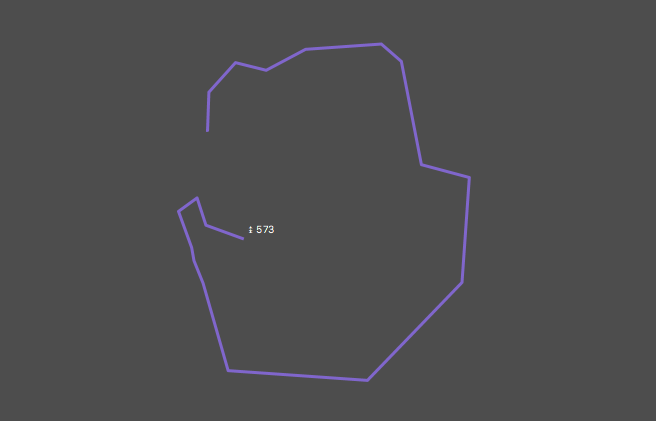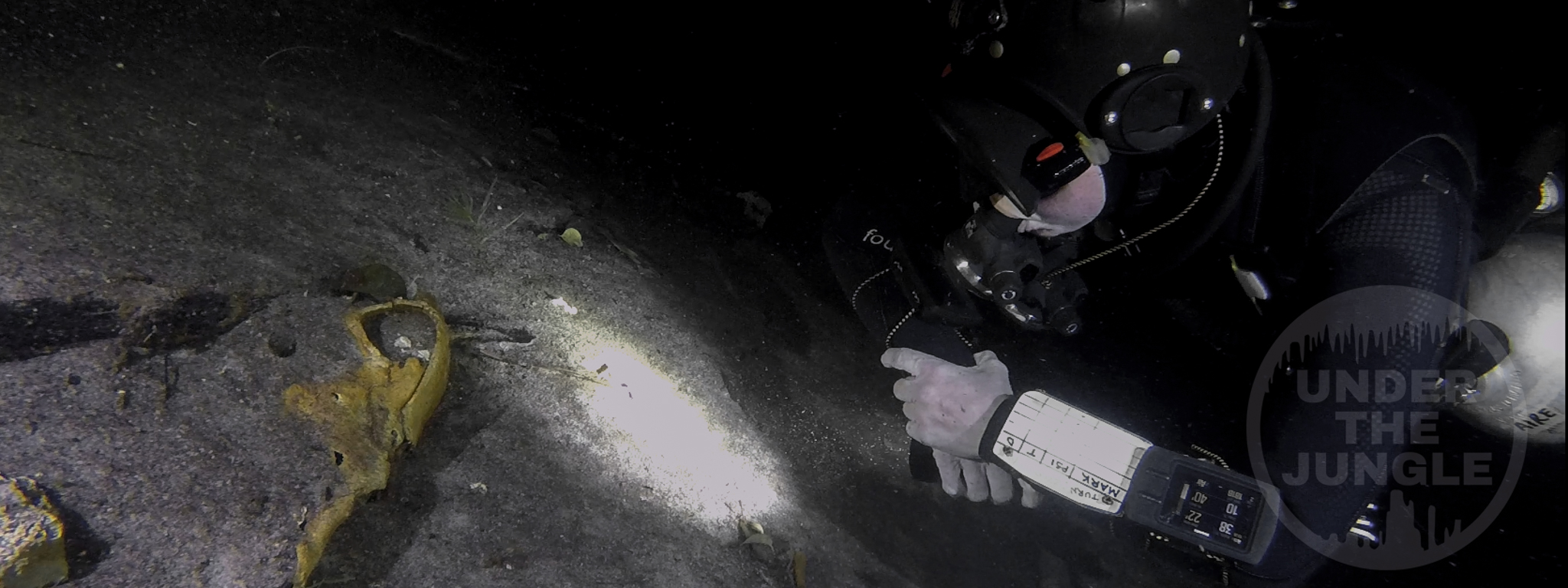
SAC WAKAX, YUCATAN EXPLORATION
BACK TO THE SINKHOLES
At this point, I have become obsessed with Yucatan sink holes. I am dragging everyone that is willing out to my accountant’s ranch to check them out with me. They aren’t really caves, but they are overhead, and there is something very unique about free falling straight down into unknown territory. The scale of these places is just massive, and the vegetation is more lush and vibrant than the foliage in Quintana Roo. It’s just a completely different experience than my usual caves. I am hooked!
CENOTE SAC WAKAX
Cenote Sac Wakax is a 200 ft diameter sinkhole in the middle of a farm. It’s accessible only by scrambling down a muddy bank on the western side of the collapse, but there are convenient roots to grab on your way down and it’s not too bad overall. The surface of the cenote is dotted with water lilies and other aquatic plants, and by mid-afternoon, the sun beams down into the opening, illuminating the whole place with a lurid green curtain of light.
Sac Wakax is a shallow sinkhole appropriate for cavern and cave divers.
THE DIVE
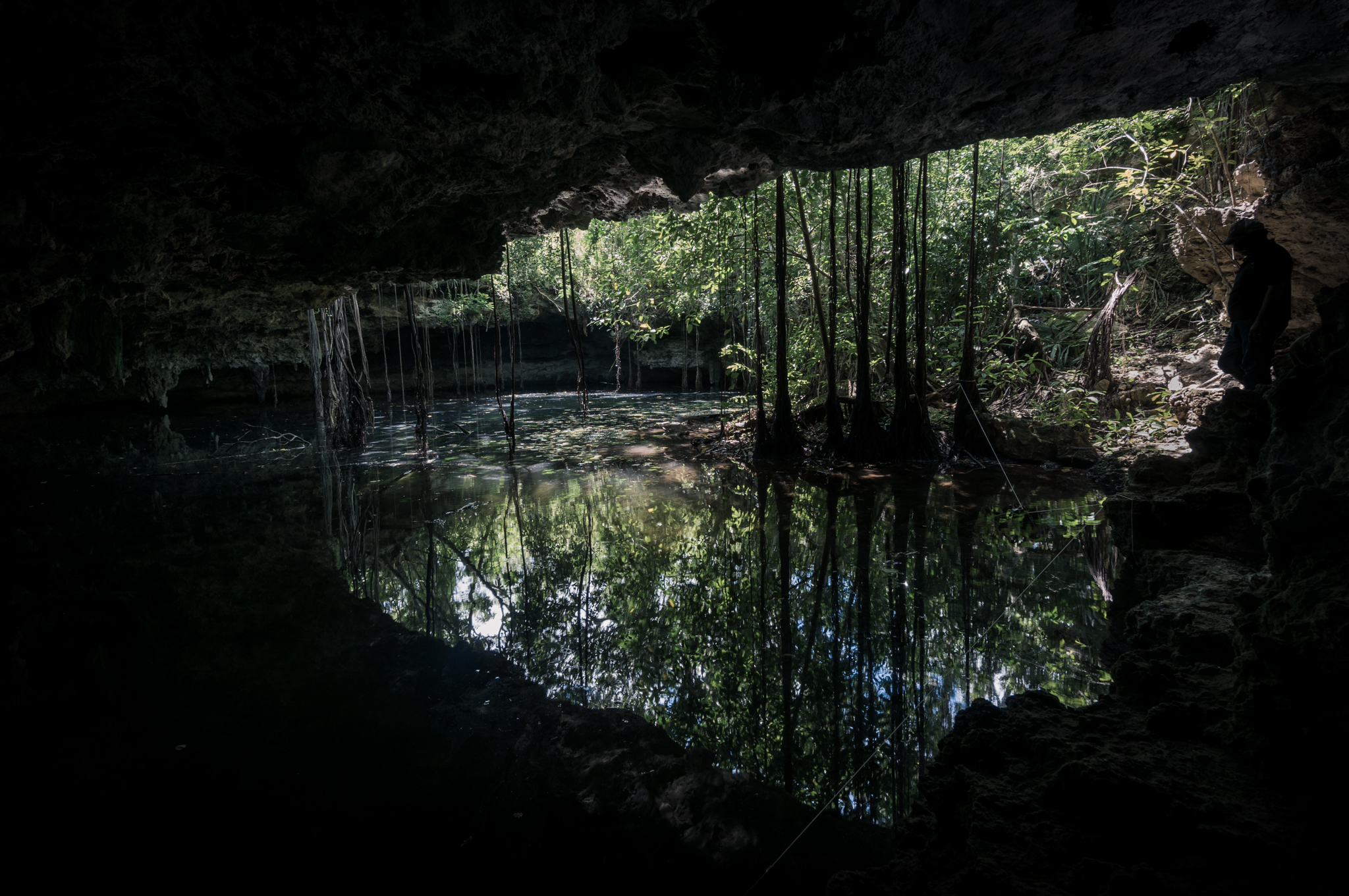
The view of Sac Wakax from the entry point.
Our exploration dive began with Alex K.S. Fraser and I tying our line to tree roots out of the water, so that we could GPS the beginning of the line after the dive. We dropped down through mild hydrogen sulfide, and followed a wall to approximately 60 feet of depth. The floor is smooth gray silt, and angular, orange stalactites hang from the ceiling along the eastern wall.
As we looped clockwise around the cavern, we noticed two extremely tight leads: one heading northwest, and one heading southeast. The passageways did not look promising, and would require no mount diving, so we continued searching the sinkhole for leads and points of interest.
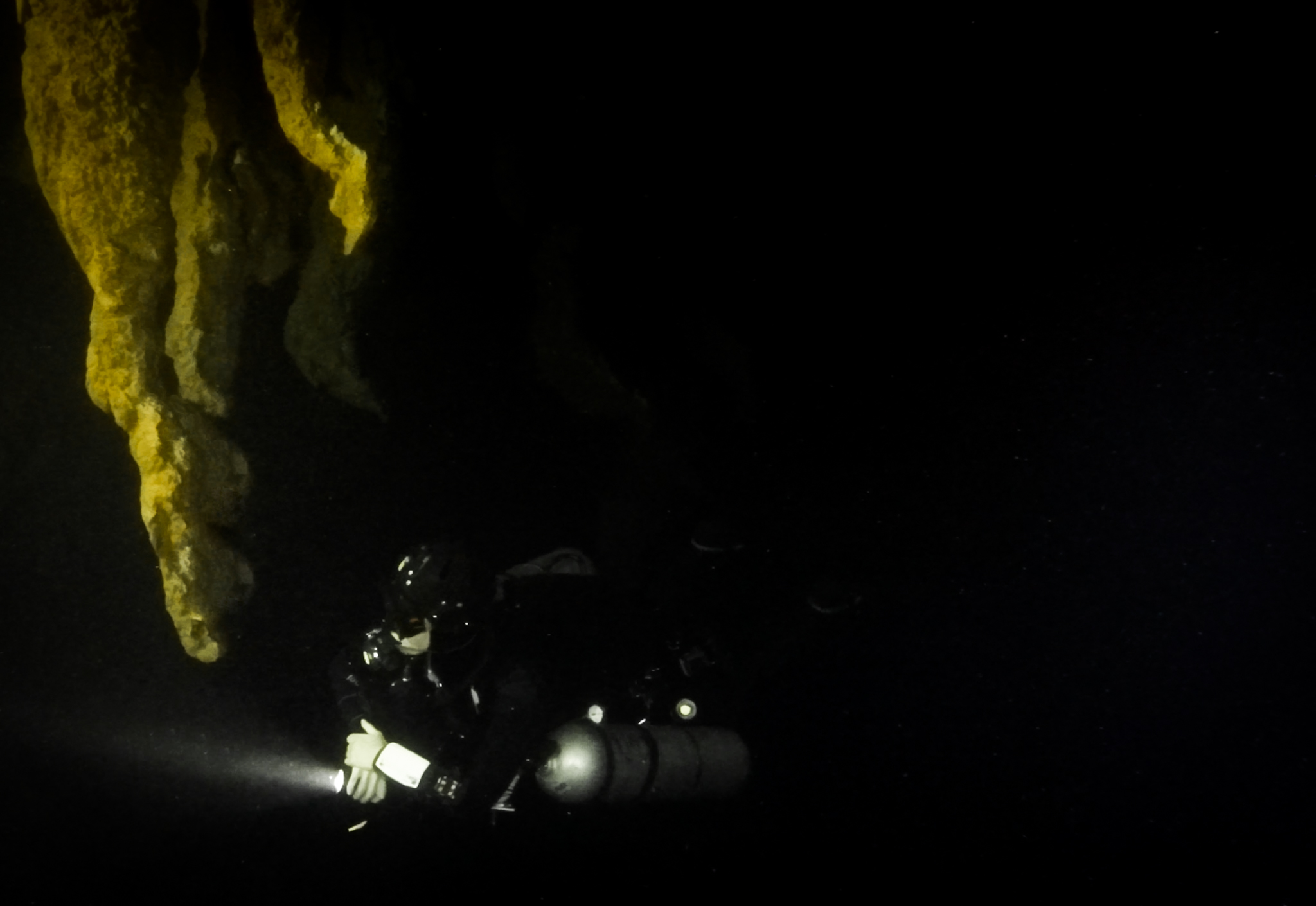
Jagged formations along the eastern wall.
REMAINS
We observed a few animal skulls poking out of the sediment, and there are probably more remains buried. However, whenever one encounters remains, it’s important to stay far enough away that neither you, your bubbles hitting the ceiling, nor the movement of the silt will in any way affect the site. (Photos are okay though!) After I made a lot of terrible guesses as to what things were in a previous blog, I will just say that we found some medium bones and some big bones.
We also saw reptile skin. I don’t think it was historic and it was honestly a bit creepy. It’s the first time that I have encountered anything like this in a cave.
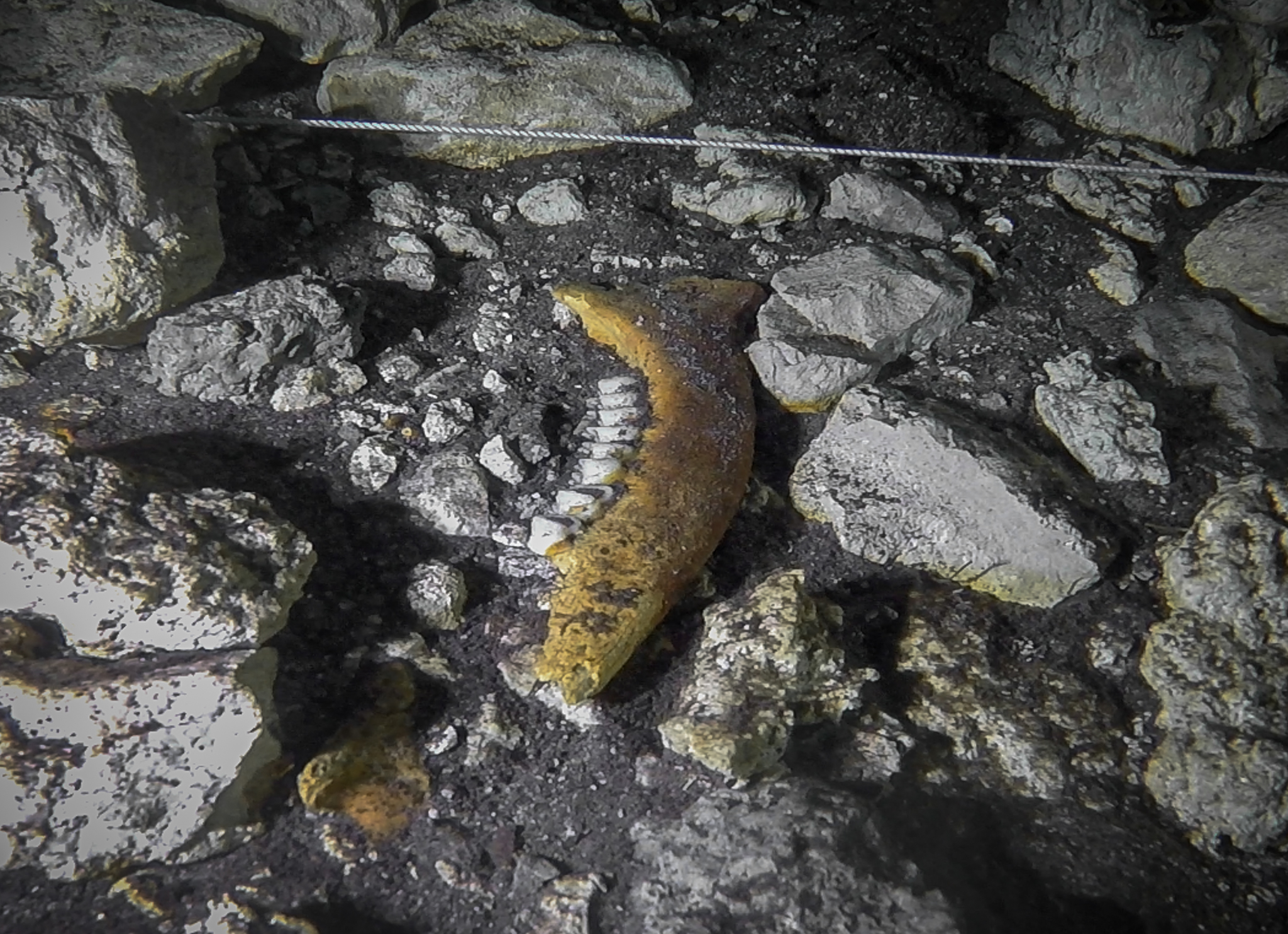
This is a medium sized jawbone of unknown origin and age.
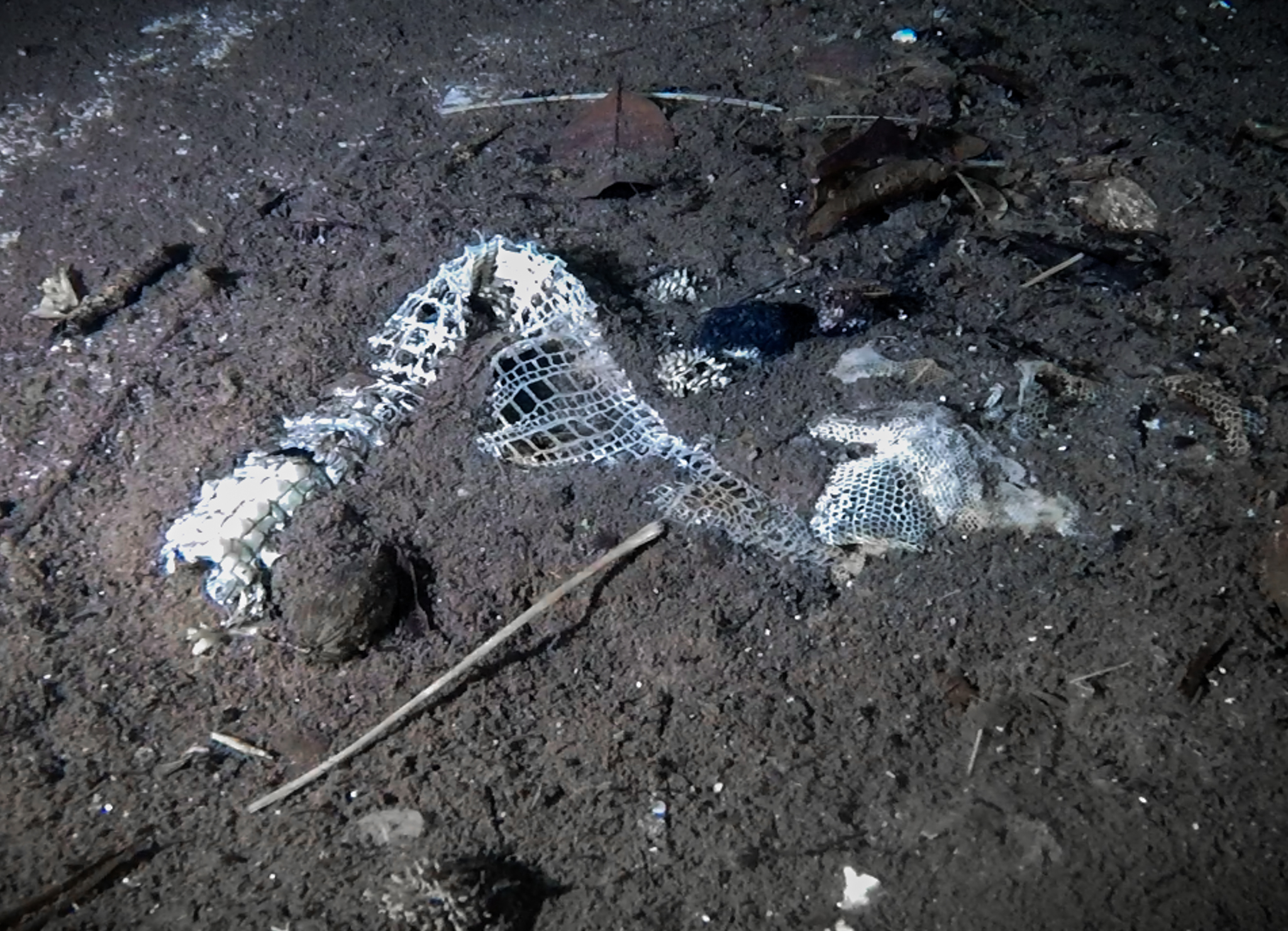
Crocodile skin. Gross but cool.
POTTERY
A few incomplete fragments of pottery were also spotted near the top of the debris cone. As with bones, it’s important not to get too close, and both the images were shot from several meters away, then enlarged to show detail during edition.
One pottery shard (left) if interesting in that it appears to have lines carved into the surface. To me, these look like part of a human figure. It would be really interesting if the remainder of the pot was found under the sediment, as perhaps it would be possible to see the completed carving. But that’s for archeologists uncover, not for us!
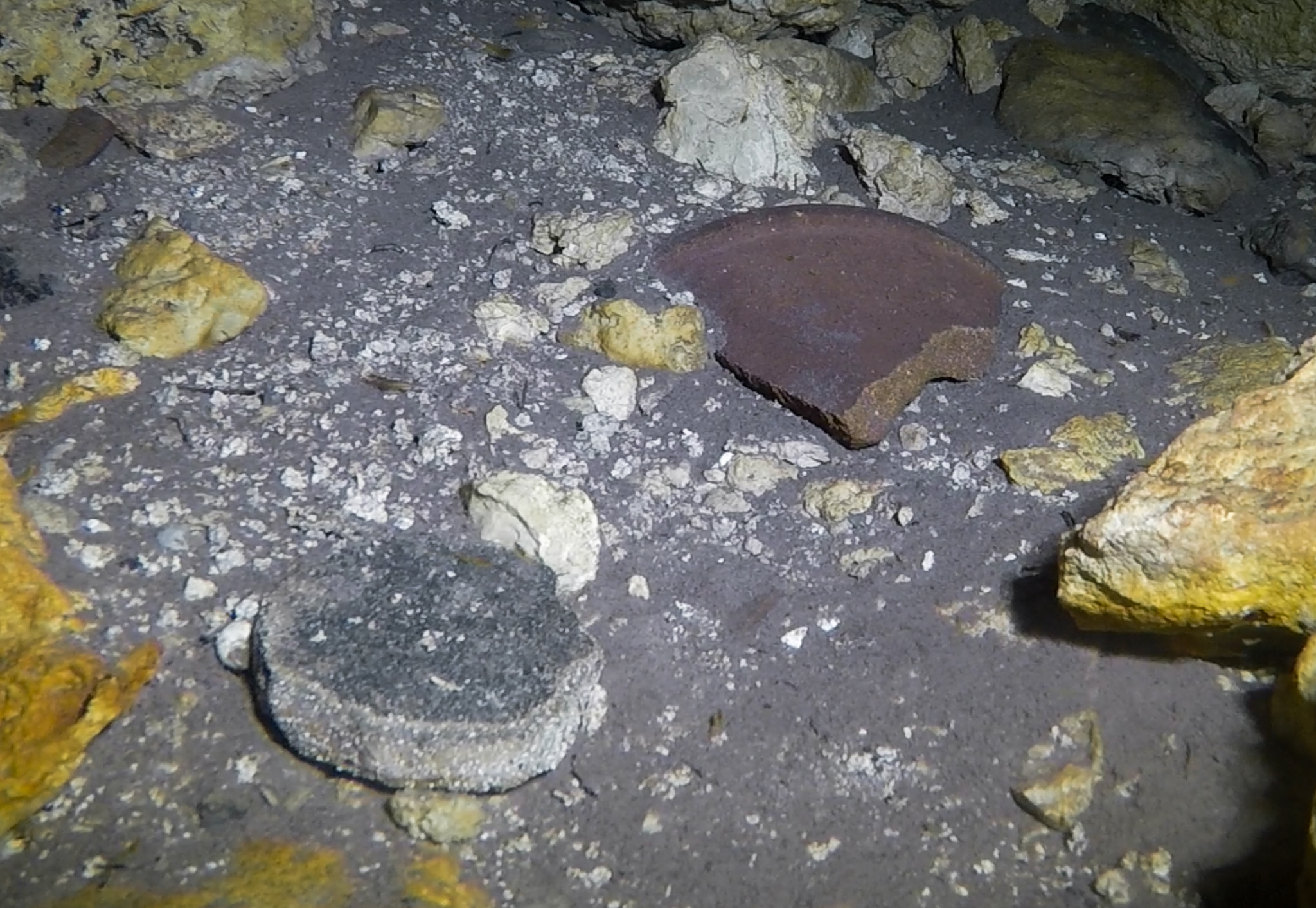
A small pottery fragment.
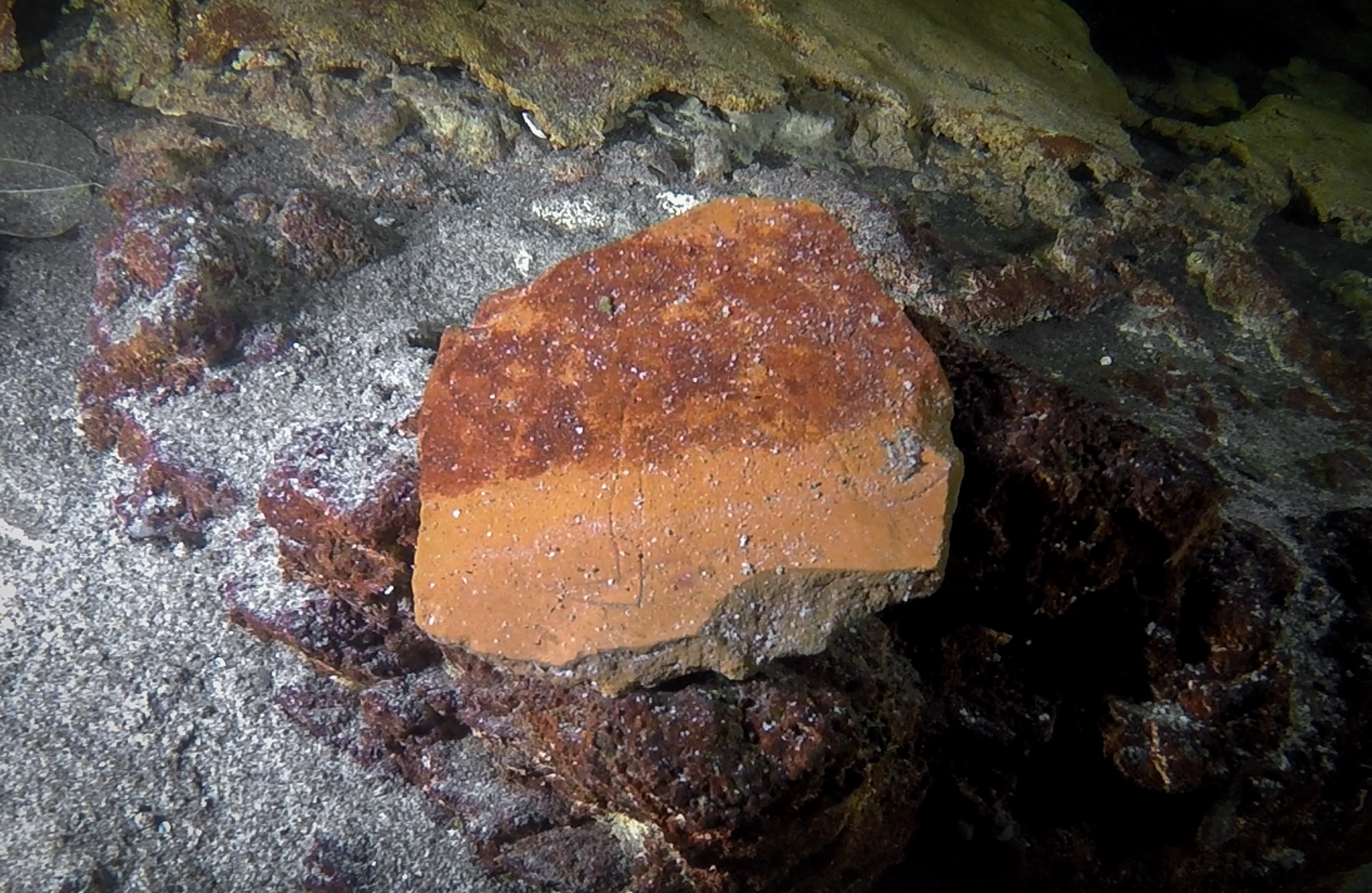
Pottery shard which appears to have lines carved into it.
SURVEY
A survey of the line placed in Cenote Sac Wakax traces the walls of the sinkhole. The maximum depth encountered during the dive was 60 feet, and there is very mild flow running from northwest to southeast. Whether the small passageways that feed into the sinkhole are diveable remains to be determined.
DIVEABILITY
We executed only one dive in Sac Wakax, and it is doubtful any cave will be found. However, the place itself is gorgeous, and the afternoon curtain of light, the fairy tale ambience of the lilies in the open water, and the unusual formations make it an interesting place to visit for a dive or two. I think it would be an interesting dive for certified cavern divers, or for divers to do as second dive in the day after visiting another of the deeper sinkholes nearby.
